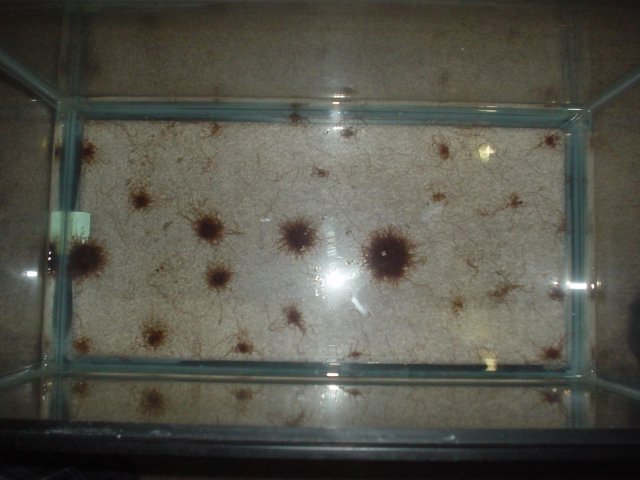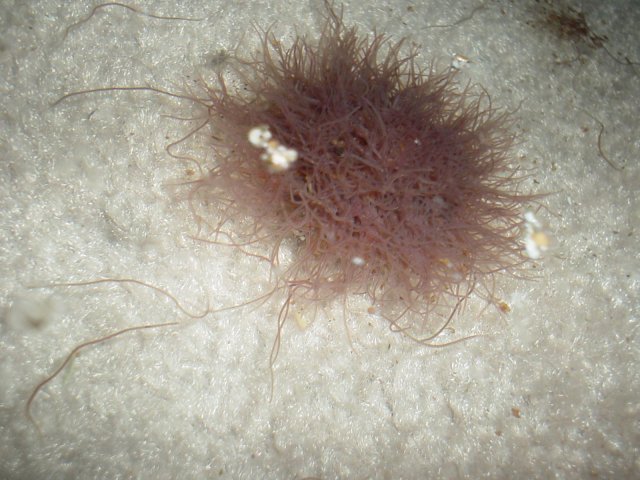A few years ago I bought some blackworms. I used most then left the rest in a rubbermaid near the sink and for years. I all but ignored it only doing water changes once in awhile and tossing in a bit of fish food. There were a few but not many worms and by the time I decided to do something with it again I had managed to get every planaria/leech out of the container leaving me with 2 distinct species of worm.
1 was undoubtly the blackworm although it was red in color. I dont know why but the new segments on my blackworms always grew red instead of black. The other type of worm was most likely tubifex which I nick named snotball worms =/
The tubifex would coil up on one end looking kinda like a pen spring when disturbed the blackworms would just twitch and flip around like... a blackworm. I eventually got rid of my tubifex culture I didn't like how hard it was to remove individuals from the snot ball they create and called home. When compared to the much cleaner and easier to seperate blackworms it was a no brainer to pick one over the other.
In anycase the key to reproduction is keeping the water fresh. I use bare glass tanks with a sponge filter and purina sinking catfish food. Thats about it... keep the water clean by changing it often and feed them => Doesn't take much food for a mass of worms either and its easy to judge if they are getting enough because they will disperse from the worm mass when the food is gone. Shouldn't take more than 2-3 days before your feeding them again AND changing the water. If after 3 days they are still in a mass break them up and get the old food out of there!
I have tried many different possibilities and no matter what if I dont change the water they stop growing and start to die.
1 was undoubtly the blackworm although it was red in color. I dont know why but the new segments on my blackworms always grew red instead of black. The other type of worm was most likely tubifex which I nick named snotball worms =/
The tubifex would coil up on one end looking kinda like a pen spring when disturbed the blackworms would just twitch and flip around like... a blackworm. I eventually got rid of my tubifex culture I didn't like how hard it was to remove individuals from the snot ball they create and called home. When compared to the much cleaner and easier to seperate blackworms it was a no brainer to pick one over the other.
In anycase the key to reproduction is keeping the water fresh. I use bare glass tanks with a sponge filter and purina sinking catfish food. Thats about it... keep the water clean by changing it often and feed them => Doesn't take much food for a mass of worms either and its easy to judge if they are getting enough because they will disperse from the worm mass when the food is gone. Shouldn't take more than 2-3 days before your feeding them again AND changing the water. If after 3 days they are still in a mass break them up and get the old food out of there!
I have tried many different possibilities and no matter what if I dont change the water they stop growing and start to die.




